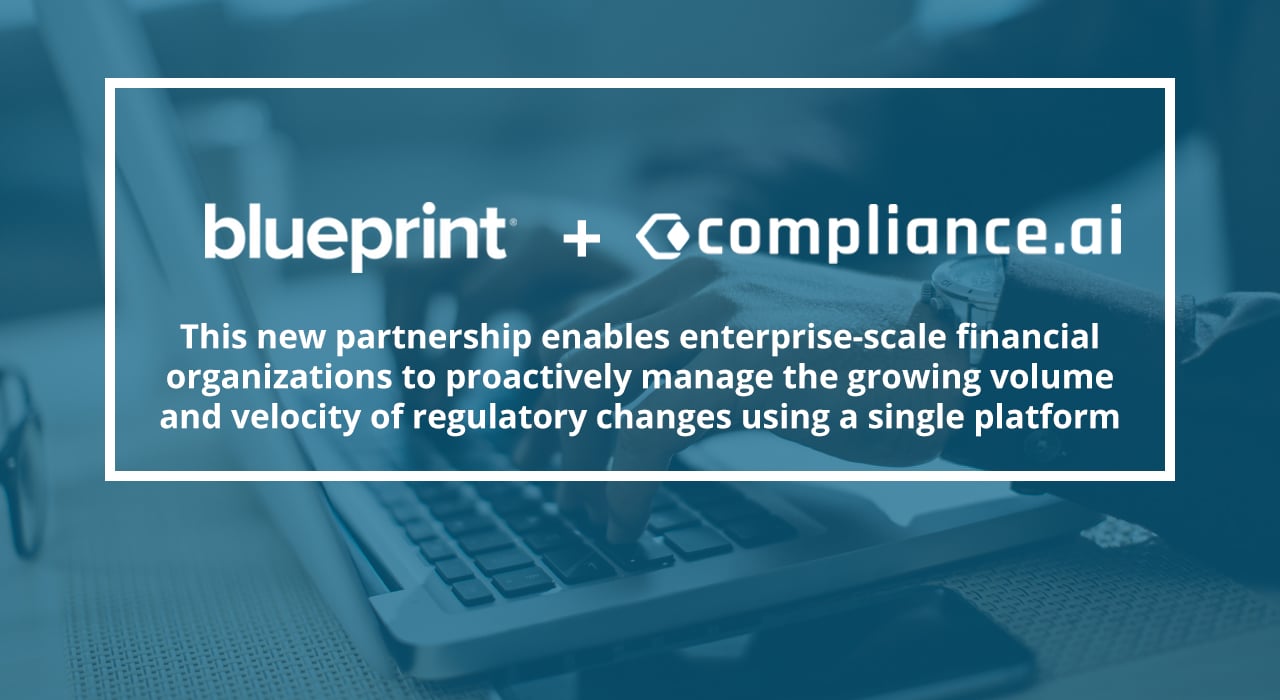How To Make Compliance Your Bank's Competitive Advantage
Financial institutions are continuing to be challenged by digital disruption.
With competitors persistently entering the marketplace, emerging new technology, and changing customer demands, traditional financial organizations are having a hard time keeping up. To make matters even more complicated, regulators can’t seem to leave financial institutions alone!
In this article, we will explore key changes that are taking the financial sector by storm, and how to prepare for the regulatory changes that come with them.
Modern Day Challenges for Financial Institutions
These challenges are not unique to any one organization. In fact, in almost all financial institutions, executives in charge of digital product design and development are facing similar challenges meeting business requirements. Three critical factors that are impacting their ability to effectively manage these changes are:
- Lack of alignment across the group.
- Inability to scale processes due to outdated legacy software.
- Disconnected and siloed data is hard to access.
For traditional financial institutions, the importance of digital innovation and modern technology has never been more essential. Digital innovation allows banks to create value by:
- Creating greater connectivity with customers, employees, and suppliers.
- Making better decisions because of improved understanding of data and analytics.
- Automating workflows with more efficient straight-through processing.
- Continuously innovating business processes and products.
Although the benefits of digital innovation are clear, the reality is it can be difficult to achieve. Banks are stuck in a cycle of playing catch-up with the ever-changing competitive, technology, consumer, and regulatory compliance landscapes. Ultimately, financial organizations need to implement modern banking processes which involve adopting digital solutions that will support them throughout each phase of the transition.
How Digital-First Services Are Transforming Traditional Financial Organizations
FinTech
The emergence of FinTech has thrown the traditional financial industry for a loop. FinTech refers to digital banking solutions such as digital banks, mobile payments, blockchain, etc. that have been primarily driven by changes in consumer demands and expectations. Unlike traditional financial organizations, FinTech’s are not bound to rigid legacy systems. The success of FinTech can largely be attributed to their agility – they can respond to consumer pain points more swiftly compared to financial organizations who have grandfathered in legacy technology. Through the use of automated technology, artificial intelligence, and machine learning, FinTech’s are pushing the financial services sector in new directions.
Digital Banking
Digital banking is ‘the new normal’. With consumers becoming more and more accustomed to using a mobile application to track expenses, pay bills, and more – digital banks are increasing in both legitimacy and availability. The United States alone has nearly 161.9 million digital banking users. Traditional banks are starting to catch wind of this trend and are developing their own digital-only banking solutions such as Finn by Chase. However, digital banking poses new regulatory challenges to financial institutions. Banks have become accustomed to collecting, storing, and tracking tons of consumer data which has led to more regulator scrutiny in terms of security if a bank is mobile-only. Regulators now require financial institutions to provide more frequent granular reports of consumer data. This means that banks must now store information and mine for additional data to meet regulatory compliance expectations.
How to Create a Sustainable Compliance Program in a Changing World
Digitally disruptive services are not only shaking things up for financial institutions, they are also throwing regulators for a loop. For a long time regulators have used a similar process when dealing with banks, however with the popularity of FinTech and digital-only banking solutions growing, regulators are being forced to change their compliance standards to fit today’s modern technology landscape.
What do these changes mean for the financial sector?
Financial organizations need to put in place control mechanisms that can effectively identify the drivers of change. This means, adopting processes that will detect and manage these factors early on, rather than waiting for regulatory changes and face risky exposure to non-compliance.
Compliance is not a one-off activity. With regulators expecting more information from financial organizations, compliance needs to be prat of the day-to-day business functions. Firms that provide their employees with the right tools and training are more likely to remain compliant, even when things are constantly changing.
Here are three key principles that any organization can adopt to ensure a sustainable compliance program:
- Review policies now rather than later to develop a standardized and centralized policy directory.
- Establish links between data by using your GRC software more effectively, helping establish legacy information standards early on as you transition to more modern solutions.
- Frequently review changes that have occurred. This will help you understand what regulators are looking for and prepare you for future regulation changes, reducing your exposure to compliance risk.
Although changes happen all around us, alignment is key to ensuring your organization remains competitive and compliant. Financial organizations must find ways to bridge the gap across disconnected groups to stay in control of global regulatory changes. By bringing teams together and equipping them with innovative technology, digital disruptors will become your allies instead of your enemies.
Learn more about how technology can make compliance your competitive advantage in our newest white paper: The Regulatory Impact of Digital Innovation on Financial Services
Share this
Recent Stories

3 Ways Banks can future-proof their Regulatory Compliance Models to avoid scandal

The Top 6 Reasons Compliance Demands Complicate Your Software Requirements



